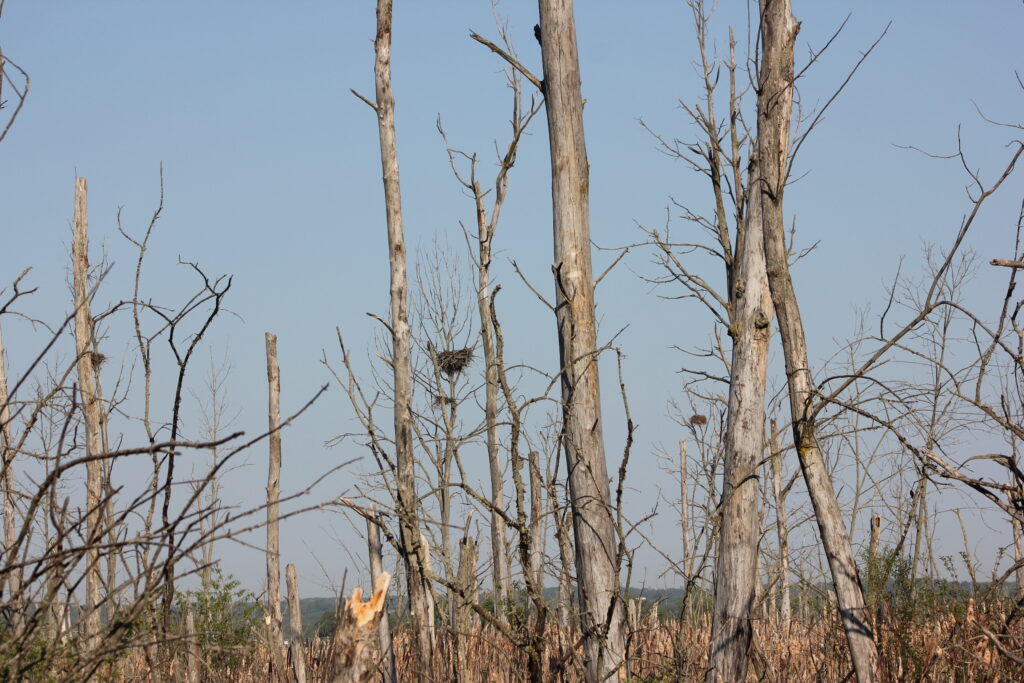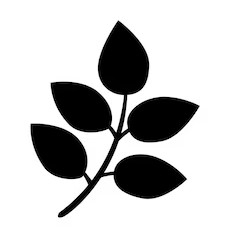Nature Preserves
The forests, wetlands, meadows and valley lands of the Lake Simcoe watershed are home to thousands of birds, animals and plants.
Our Nature Preserves, also known as Ecological Preserves or Natural Heritage Areas, are conservation properties that we have acquired through purchase or donation. These properties have outstanding natural heritage value and make significant contributions to water quality, wildlife habitat, and carbon sequestration and storage.
While our conservation areas provide opportunities to connect with nature, our preserves help protect sensitive ecosystems in the Lake Simcoe watershed. Our nature preserves are particularly vulnerable to disturbance, and because of this vulnerability, these properties are not available for public use.

Our Nature Preserves
We currently own or manage 12 nature preserves in the Lake Simcoe watershed. We’ve included some of our properties in the list below. Click each property to learn about the habitat and species we’re protecting!
The Herrema Nature Preserve was historically part of Lake Algonquin and consists of open water, meadow marsh, alder thicket, cedar swamp and black ash swamp. This property is considered a Provincially Significant Wetland and is home to a variety of species, from songbirds such as the red-wing blackbird, yellow warbler, and alder flycatcher, to wetland birds such as great blue herons and belted kingfishers. Snapping turtles have also been spotted nesting near the brook on the property.
The Herrell Nature Preserve contains regionally rare fen and bog communities which assist in supporting rare species. It’s home to species such as sensitive fern, black ash, eastern white cedar, royal ferns, meadow rue, raspberry, and a variety of sedges
Located partially within a Provincially Significant Wetland, the Brozic property is part of a Regionally Significant Life Science (ANSI). ANSIs are areas of natural and scientific interest that contain features that have life or earth science values related to natural heritage protection.
Although Brozic is one of our smaller properties, it is part of a much larger forested wetland habitat. It is home to a variety of sensitive bird species, including winter wren, veery, red-eyed vireo and ovenbird.
The Raikes property is one of the few remaining groundwater influenced forests along the shore of Lake Simcoe. The cold groundwater on this property makes a significant contribution to fish habitat in Lake Simcoe. Raikes is also home to songbirds such as the black-capped chickadees and song sparrows.
The Keilhoffer property is relatively flat as it was previously a proglacial lakebed from Lake Algonquin. It is a Provincially Significant Wetland with a high value of biodiversity. Some species found on this property include the willow flycatcher, yellow warbler, common yellowthroat, white throated sparrow, veery, northern water thrush, gray tree frog, western chorus frog, and wood frog.
The Zephyr Creek Wetlands form part of a Provincially Significant Wetland, an Areas of Natural and Scientific Interest and is considered an Environmentally Sensitive Area. It contributes to flood reduction, ground water recharge and water quality improvements.
The Zephyr Creek Wetlands contain a mix of features, including a mixed swamp, extensive ephemeral pools and marshes with standing water. The most common ecosystems found on this property are alder thicket swamps, black ash swamps, and white cedar swamps, providing excellent breeding habitat for a number of wildlife species. Species that can be found here including western chorus frogs, wood frogs, tree frogs, eastern wood-pewee, great-crested flycatchers, mourning warblers, and ovenbirds.
This lowland area was created by Lake Algonquin and lies within a Provincially Significant Wetland. This property is also part of an Areas of Natural and Scientific Interest.
Although the entire property can be classified as a forested swamp, there are a wide range of ecosystems within it including a red maple swamp, silver maple swamp, cattail marsh, reed canary grass and meadow marsh and an alder thicket. Some species that can be found here include the black-and-white warbler, great-crested flycatcher, northern water thrush, red-eyed vireo, veery, winter wren, chestnut-sided warbler, gray tree frog, western chorus frog, northern leopard frog, wood frog, white-tailed deer and beavers.
Primarily composed of sedge marsh, cattail marsh and black ash swamp, the Webb Nature Preserve is part of a Provincially Significant Wetland and is located within an Environmentally Sensitive Area. Historically, this property was dyked and cleared to support farming. Since farming has ended, the property is beginning to resemble more of its pre-agricultural conditions.
This Webb property is known for being home to a colony of blue herons – in one season, more than 64 nests were seen to be in use!
Other interesting species that have been found on this property in the past include bald eagles, green herons, wood ducks, American black ducks, Virginia rail, eastern wood pewee, marsh wren, northern flicker, and warbling vireo.
Yeap is part of a Provincially Significant Wetland and is a Biological Environmentally Sensitive Area. It is primarily a swamp property which contains a small section of a creek. Ecosystems found on the property include reed canary grass meadow marsh, alder thicket swamp, and white cedar mixed swamp. Species historically found on the property include mallards, red-winged black birds, marsh wren, alder flycatcher, common yellowthroat, chipping sparrow, cedar waxwing, wood thrush, ruffed grouse and gray catbird.
The Beaver River Wetland Conservation Area can easily be divided into two functional portions – the trail portion of the conservation area which can be enjoyed by visitors, and the wetland portions of the conservation area which is protected for its significant ecological importance and values. Additional information about the trail areas including compatible uses, entrance points and maps can be found on the Beaver RiverWetland Conservation Area page.
The wetland portions of the conservation area are not compatible for recreational use or access by the public. These properties are provincially significant wetland and have been acquired to conserve and protect these ecologically sensitive and high functioning natural areas. These wetland properties are situated adjacent to the Beaver River in the Township of Brock and the City of Kawartha Lakes. These properties are home to a wide variety of species, including birds, reptiles, amphibians, mammals, and fish. The conservation area is home to some significant species, including snapping turtles, least bittern, Canada warbler and Midland painted turtles.
The Beaver River Wetland area has been evaluated by the Ministry of Natural Resources and Forestry as both a Provincially Significant Wetland and an Environmentally Sensitive Area. These areas provide several functions including replenishing and storing water, filtering pollution, mitigating the effects of climate change and providing critical habitat to animals. These properties do not contain any built infrastructure and are not available for access by the general public.
In the Lake Simcoe watershed, you will find thousands of species of plants and animals! There are:





What is a Natural Heritage System?
Natural heritage systems are made up of natural heritage features and areas, linked by natural corridors, which are necessary to maintain biological and geological diversity, natural functions, viable populations of indigenous species and ecosystems.
These systems can include:
- wetlands
- coastal wetlands
- fish habitat
- woodlands
- valleylands
![]() Who to Contact
Who to Contact
Conservation Lands
✆ 905-895-1281
✆ 1-800-465-0437 Toll free
✉ info@LSRCA.on.ca
